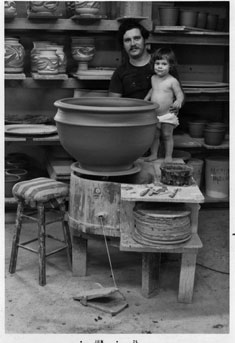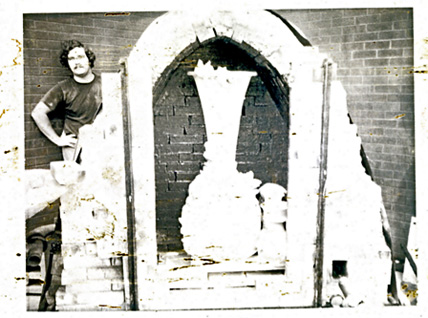
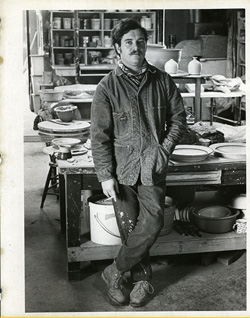
SALTGLAZE PROCESS
Salt glazed stoneware represents a variation in the traditional stoneware high fire process. As the kiln reaches peak temperature sodium chloride (salt) is introduced into the hottest part of the kiln, generally the firebox area. Through the process of heat the sodium in the salt separates from the chlorine whereby it fumes throughout the kiln combining with the alumina and silica in the clay body and/or glazes to form a sodium-silica-alumina base glaze. Therefore, it is possible to coat unfired or partially fired clay with glaze while it is in the kiln. Similar results (though a little more difficult) can be achieved by introducing soda bicarbonates instead of sodium chloride.
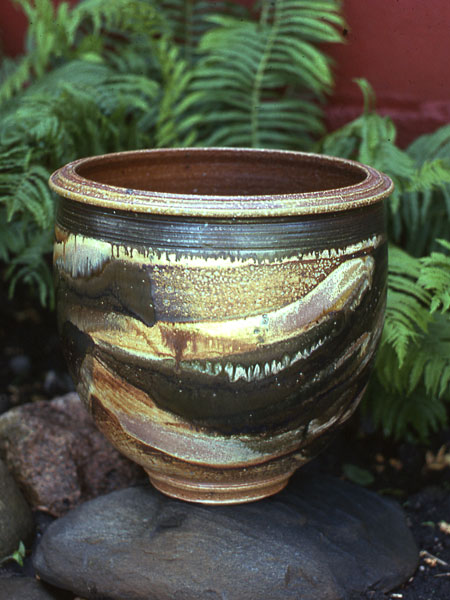
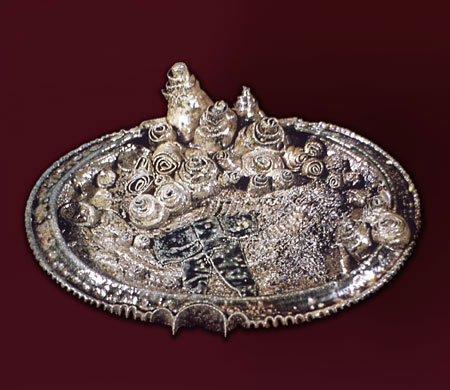
The pieces illustrated were decorated using a limited color pallet that consisted of four colored slips and two glazes. These slips and glazes were specially designed to flux (melt) in conjunction with the sodium fumes received during the firing process. The color of a piece is subject to the same variables as the regular stoneware firing process, however, the introduction of salt in the mix constitutes a new set of interesting color and texture results that are generally unattainable in the other firing processes.
These pieces were produced first as a graduate student between 1971-72 and then as a professional potter between 1972-80. The shop name was Poplar Creek Pottery and was located in Hampshire, Il. Several decorating styles were developed. The pieces from the MFA show were social statements dealing with barnacle like roses, ribbons and bows and other delightful icons of the time depicted in a semi-Macomb fashion. (They introduced the draft lottery and my number came up on the first draw, Friends were in Viet Nam. ). Don Reitze (contemporary clay worker) and Ivon Albright (Chicago Based painter) had an influence on this work.
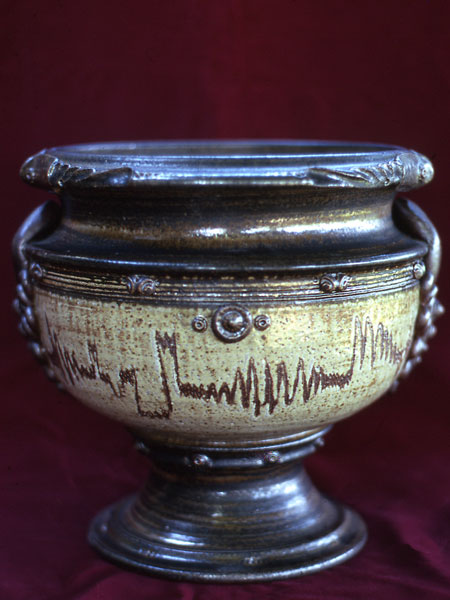
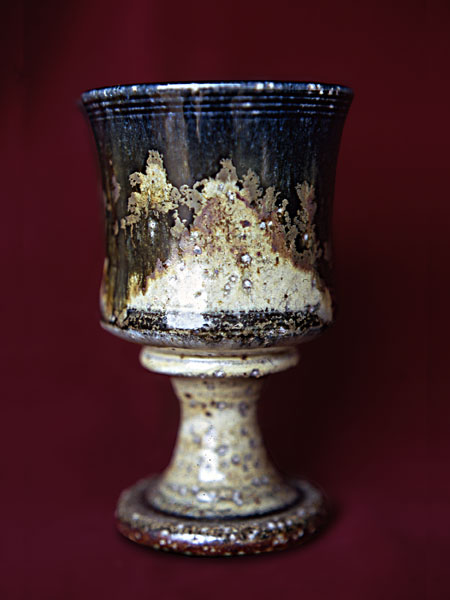
Later, the Oceanic Series was inspired by sea life forms further represented by random electro cardiogram lines.
A Visional Series involved creating imaginary landscapes through color texture. Another series utilized butterflies representing my children. During the first year of business in the Hampshire shop I fired a 20 cu. ft. usable space salt kiln 51 times. Several thousand salt glazed pieces were made between 1973-80.

